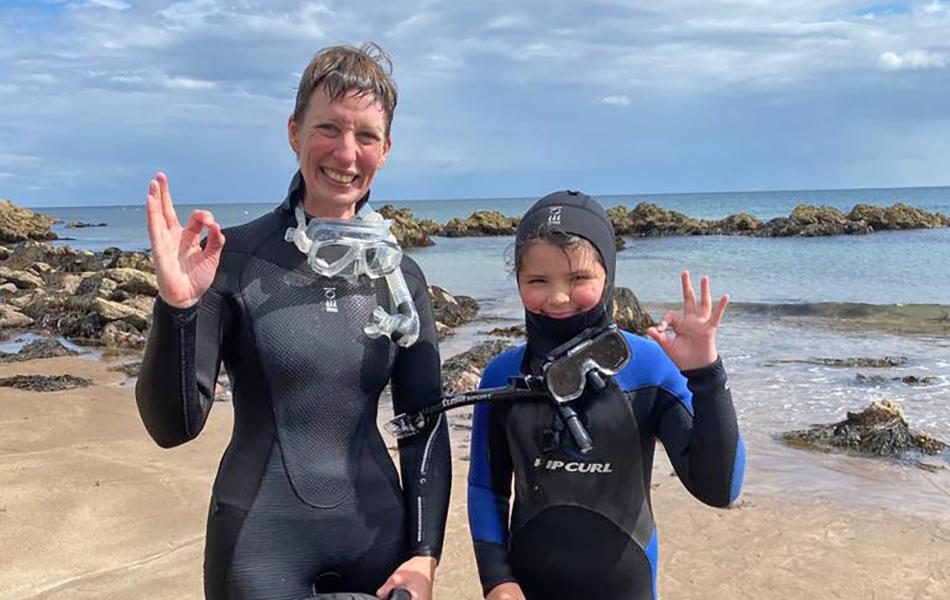
Photo credit: Emma and Gordon Taylor/Snorkelology
Andy Torbet considers the appeal of snorkelling offshore sites in the UK and beyond.
We normally associate snorkelling with the shore. Certainly, the vast majority of the examples offered in this column over the years begin and end on dry land. Whether it’s the seashore, lakeshore or riverside, the principle remains the same. In fact, I’ve often used shore diving guides to find snorkel spots in unfamiliar (to me) parts of the UK.
However, we are no more limited to a fixed, terrestrial entry and egress than any other diver. We can grab our snorkels and head for the blue horizon.
Our means of reaching these offshore locales can vary, but needless to say the traditional means of conveyance is a boat. That may seem obvious, but I’m aware of snorkelling taking place from a hovercraft, after skydiving and even by helicopter. I used the latter to access the shores of a glacial lake in Greenland, so technically that doesn’t count as an offshore dive!
I have reached dive sites several miles out to sea on a kayak. However, this is not something I’d recommend unless you’re skilled and equipped for such endeavours. The ocean is big, and you are vulnerable in your small plastic craft when the weather turns. The most sensible and obvious way is do what the other divers do. Take a boat.
There are three main motivations for offshore snorkelling: geological, historical and biological, with some overlap. The first includes remote rocks that pierce the ocean surface like an oasis in blue desert. My most memorable was Eddystone Rock, which forms the foundation of the eponymous lighthouse. Here, after a boat journey of 12 miles, we dropped in on a huge shoal of bass that seemed to be circling the rock.
I have also visited some distant shipwrecks with my snorkel. Some are too deep to be mentioned here but one example, the HMS Port Napier, lies around 300 metres off the coast. However, the closest piece of land is only reachable by hours of hard trekking over pathless parts of Skye, so both divers and snorkellers will opt for a boat.
The wreck is around 150m long, intact and breaks the surface at low tide, so you can enjoy it without having to commit to a breath hold. I filmed here for The One Show a few years ago and was blessed with calm seas, clear visibility and the Scottish sun, a creature seen less frequently than the Megalodon.
The offshore surface can also be a haven for large pelagic life. Although I have been fortunate enough to swim with seals all over the world and often from the shore, my best encounters have always been around the Farne Islands, only accessible by boat. My forays into filming both blue sharks and makos both required us jump in with snorkels more than 20 miles from land.
In truth, you can have a great time snorkelling close to shore. But if the open ocean calls and the vastness beckons, there’s always something out there for an adventurer armed with their trusty snorkel.
Article ‘’Head for the horizon!’ by Any Torbet first published in SCUBA magazine, Issue 158 September 2025. Images in this online version have been substituted from the original images in SCUBA magazine due to usage rights.




